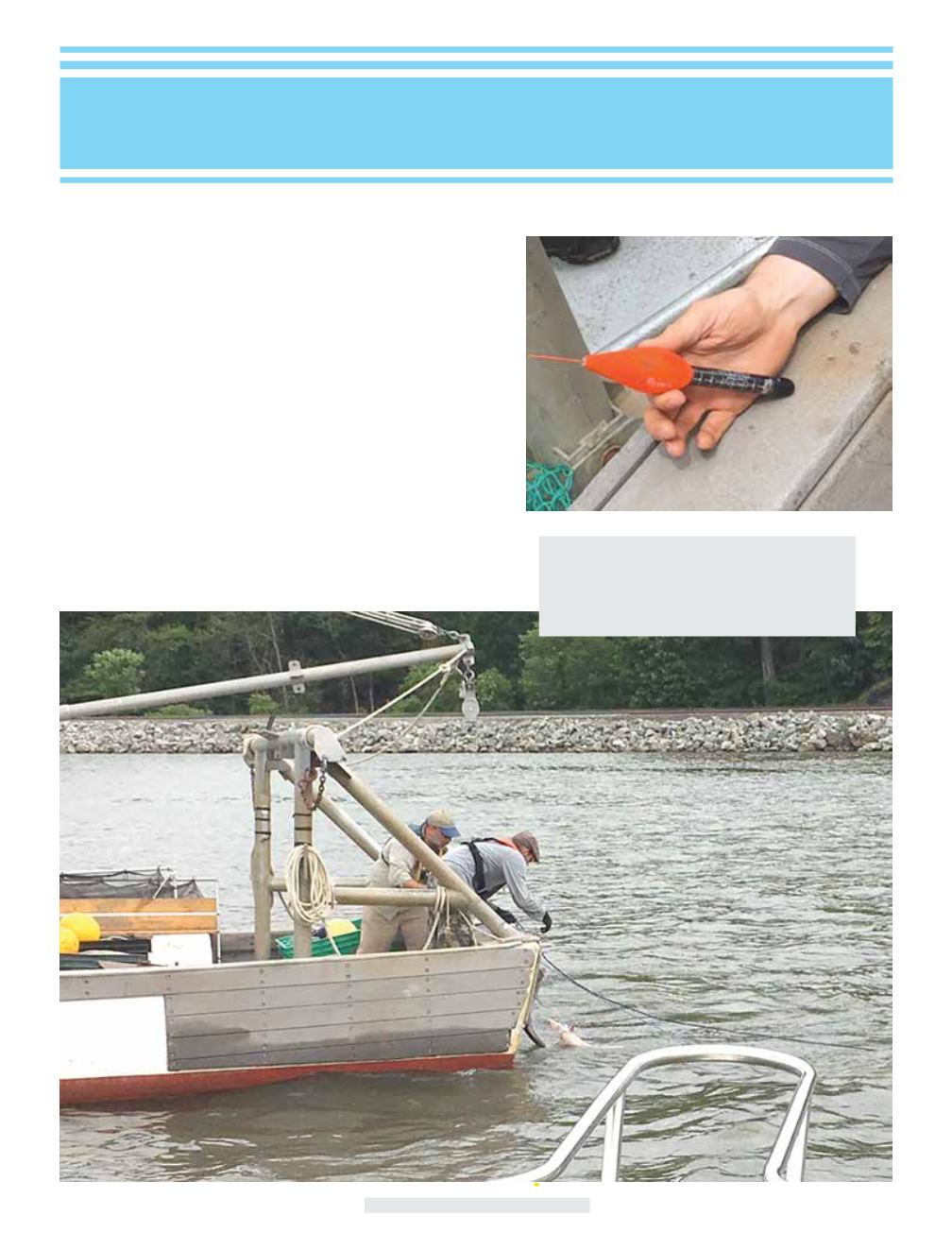

July - August 2018
40
Disponible en línea en español.
E
very spring,
Atlantic sturgeon return to the Hudson River from
their overwintering grounds in the coastal Atlantic Ocean. Large juvenile
sturgeon arrive in search of food in the river’s plentiful benthic foraging
habitats, while even larger, mature adult sturgeon travel to the spawning
grounds in the tidal freshwater portion of the river to ensure the arrival
of the next generation. Accustomed to the depths of their ocean home,
Atlantic sturgeon spend much of their time in the deep channels and holes
of the Hudson and rarely wander into the shallow, off- channel habitats.
The bottom of the river channel is 30 feet deep at its shallowest and
plunges to more than 200 feet deep near West Point with many areas
deeper than 100 feet.
Through years of acoustic telemetry tagging, tracking, and monitoring, we
know that sturgeon reside in the deeper waters of the river, but where they
swim in the water column is largely a mystery. Because Atlantic sturgeon
are benthic foragers, feeding on small fish, crustaceans, worms, insect
larvae, and other invertebrate prey that live on and in the river bottom, we
know that sturgeon spend at least some of the time at the bottom of the
Tagging Hudson Sturgeon
Field biologists collecting Atlantic sturgeon for data
tagging. Work conducted pursuant to NMFS Sturgeon
Research permit no. 20340 to the New York State
Department of Environmental Conservation.

















